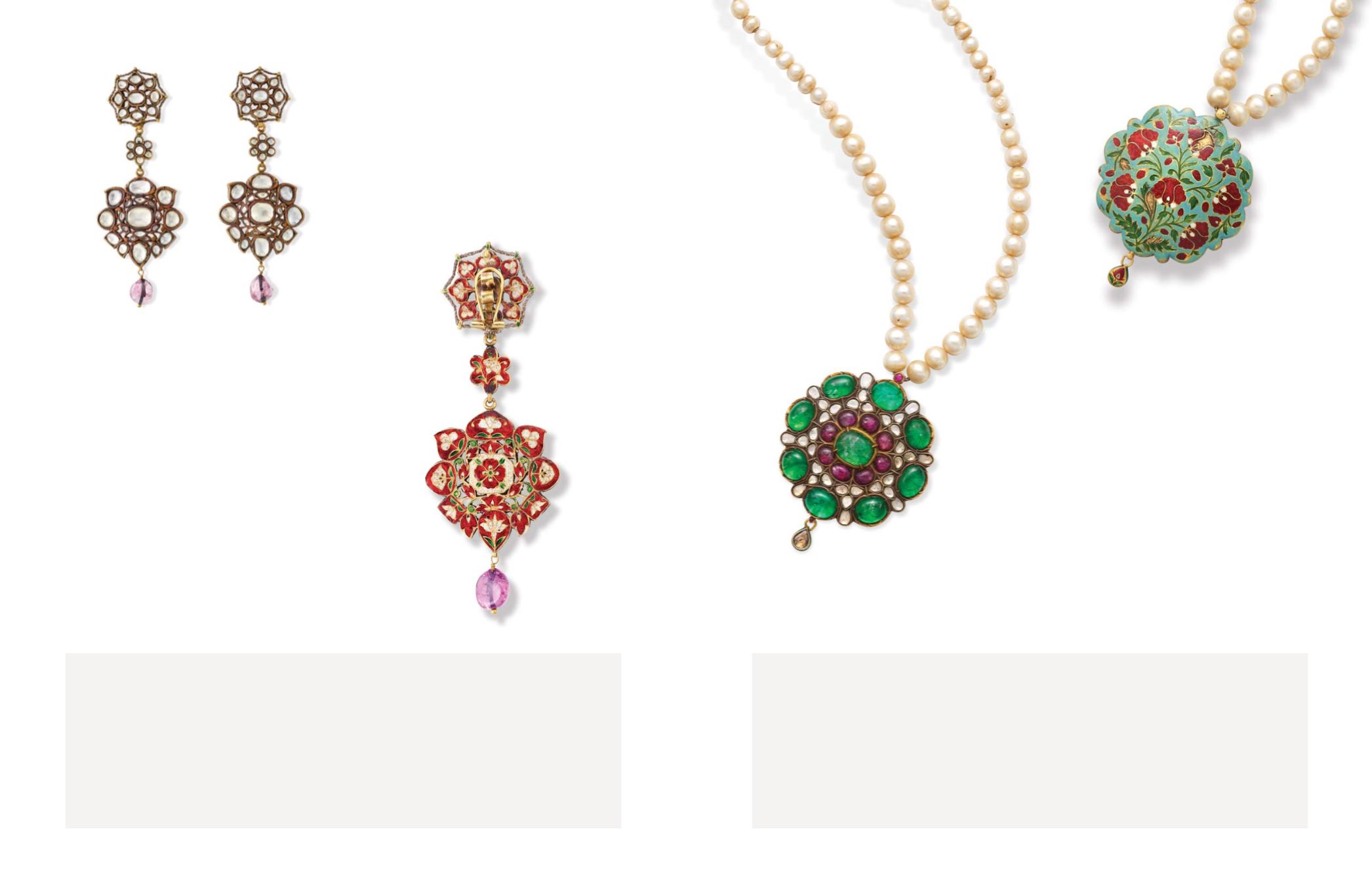

104
105
136
PAIR OF DIAMOND AND SPINEL
EARRINGS
Comprising of a flower‒head surmount of
polki
‒
diamonds suspending a similarly set flower‒head
design, further suspending a larger flower‒head design
of similarly set
polki
‒diamonds suspending a spinel
bead. The reverse is in red, green and pink enamel of
floral motif on gold ground.
Gross weight: 55.85 grams
$ 5,715 ‒ 8,575
Rs 4,00,000 ‒ 6,00,000
PROVENANCE:
Property from the private collection of a former
Indian Princely family
Private Collection, circa 1940s
137
EMERALD, RUBY, DIAMOND AND
PEARL NECKLACE
Of superior craftsmanship, the necklace is a stunning
combination of
jadau
‒work and enamel techniques.
A gently graduating row of pearls suspends a central
pendant centring on an emerald cabochon with a
similarly set surround of rubies, diamond
polkis
and
emeralds, further suspending a
kundan
‒set diamond.
The reverse has intricate enamel in floral motif in red,
green and blue on gold ground.
Gross weight: 107.83 grams
$ 10,295 ‒ 13,240
Rs 7,00,000 ‒ 9,00,000
PROVENANCE:
Property from the private collection of a former
Indian Princely family
Private Collection, circa 1940s
M
eenakari
refers to the technique of enamelling, which was widely practised during the
time of Emperor Akbar, from the 16
th
through the 17
th
centuries. Contrary to the belief
that it is a dying art, this style of enamelling is a widely practiced technique in India, with
Jaipur being home to many enamelling workshops. However, this tradition was not indigenous
to the subcontinent. According to historians, it was first introduced around the 13
th
century,
through Punjab, and flourished under the reign of the Mughals, spreading to other locations
from the royal ateliers. Benares (Varanasi), Jaipur, Lucknow, the Deccan, and Kangra in India,
as well as Multan and Lahore in Pakistan, are famed for their enamelling techniques. In this
tradition, even the reverse of an ornament was decorated with unmatched detail, most commonly
with floral and foliate motifs including chrysanthemums, lotuses, poppy flowers and rosebuds.
These would sometimes be interspersed with birds and animals, with gradations of colour in
the designs enhancing each motif. Mughal, and later Basohli miniature paintings from the
same region, incorporated similar floral motifs, seeking to recreate an equivalent of paradise.


















